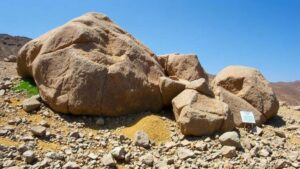Recognizing Gold-Rich Gravel Layers in Glacial Moraine Deposits
Recognizing Gold-Rich Gravel Layers in Glacial Moraine Deposits
Understanding how to identify gold-rich gravel layers within glacial moraine deposits is essential for both amateur prospectors and professional geologists. This article explores the formation of glacial moraines, offers methods for recognizing these economically significant gravel layers, and discusses real-world applications in mineral exploration.
What are Glacial Moraines?
Glacial moraines are accumulations of debris deposited by glaciers as they advance and retreat. These deposits can range from finely particulate silt and clay to larger boulders and gravel. Moraines are typically classified into three main types: terminal, lateral, and ground moraines, each indicating different aspects of glacial activity:
- Terminal Moraines: Formed at the glaciers leading edge, these are often formed from the debris pushed forward by the glacier.
- Lateral Moraines: These develop along the sides of glaciers, consisting of materials eroded from the valley walls.
- Ground Moraines: These are formed from material deposited beneath the glacier and are often more heterogeneous.
The Formation of Gold-Rich Gravel Layers
Gold-rich gravel layers in glacial moraines typically originate from the weathering of gold-bearing rocks in the surrounding regions. As glaciers advance, they erode these rocks, incorporating gold particles into the sediment. This process of weathering and transportation is crucial in the concentration of gold in specific layers of gravel deposits. following factors influence the formation of economically significant gravel layers:
- Source Rocks: The proximity to gold-bearing formations such as quartz veins or conglomerates plays a vital role.
- Glacial Movement: The glaciers movement pattern dictates where and how the gold and gravel are deposited.
- Sorting Mechanisms: As sediments are transported, natural sorting processes often concentrate heavier materials, including gold, within specific layers.
Recognizing Gold-Rich Layers
Identifying gold-rich gravel layers requires a keen understanding of grain size, sediment composition, and structural indicators. Several key characteristics can assist in recognizing these layers:
- Grain Size and Density: Gold particles, being heavier than most minerals, will often settle at the bottom of gravel layers. So, layers with a mixture of fine and coarse gravel should be closely examined.
- Color and Texture: Gold-rich gravels can have a distinct color and texture. Prospectors should look for yellowish tint or metallic luster in the sediments.
- Other Indicator Minerals: Presence of heavy minerals, such as magnetite or scheelite, can suggest nearby gold deposits.
Case Studies and Examples
Several notable examples showcase successful identification of gold-rich layers in glacial moraines:
- The Klondike Gold Rush: In the late 19th century, prospectors identified gold-rich gravels in the moraines of the Klondike River in Canada, leading to a significant mining boom.
- Alaska Gold Streams: Studies along glacial meltwater streams in southeastern Alaska have revealed layers of gravel containing gold, attributed to ancient glacial deposits.
Challenges in Recognizing Gold-Rich Layers
Despite the methods available, several challenges may hinder the accurate identification of gold-rich gravel:
- Geological Complexity: The heterogeneous nature of glacial deposits can mask rich layers.
- Overburden Thickness: Thick layers of sediment can hide the desirable gravels, requiring extensive excavation.
- Environmental Concerns: Exploration activities can pose risks to local ecosystems, necessitating careful management and compliance with regulations.
Actionable Takeaways
For individuals and professionals interested in identifying gold-rich gravel layers, consider the following actionable steps:
- Conduct thorough geological surveys to identify potential gold-bearing sources near glacial deposits.
- Use gold panning in streams that drain glacial moraines to test for gold presence.
- Employ geophysical methods such as ground-penetrating radar to detect subsurface anomalies indicative of gold deposits.
By utilizing these methods and increasing knowledge about glacial moraines, there is a greater likelihood of successfully locating lucrative gold-rich gravel layers. Understanding these essential concepts lays the foundation for effective exploration and mining endeavors.

